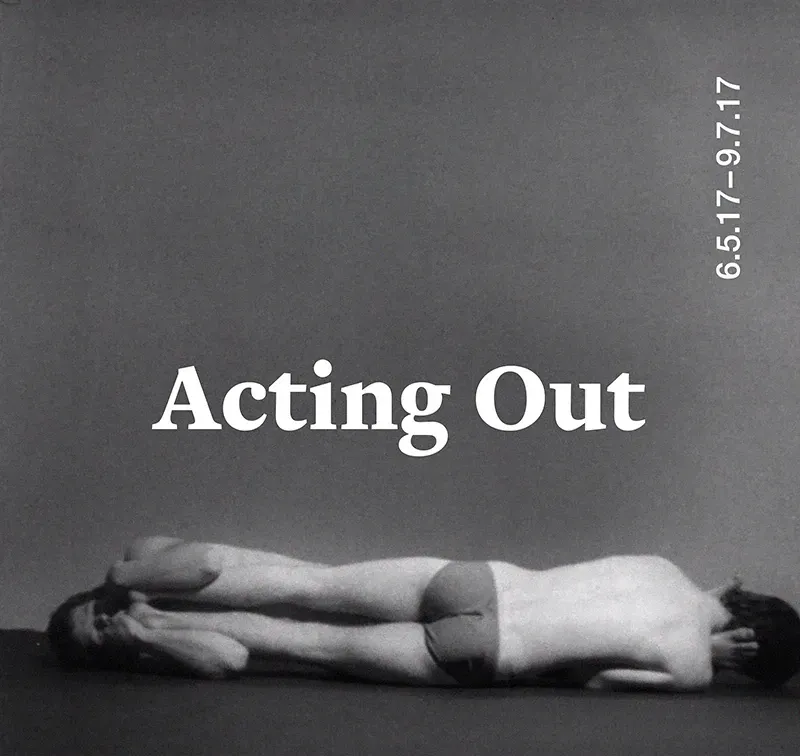Rethinking the relation between art and the body
Written by

Adam Art Gallery’s newest exhibition, Acting Out promises to provoke and entice when it launches this Friday, by bringing together works of New Zealand and international artists unafraid to produce challenging art about the body and sexuality.
Acting Out presents art works spanning the late-1960s to the present by nine artists of different generations. Each artist treats the body as both the subject and object of their work suggesting the ongoing entanglement of the body with the making of art.
Adam Art Gallery curator Stephen Cleland says the exhibition, which includes performance, video, photography, painting and sculpture, examines the intersection between art and the body.
“In various ways, each of the artists present or perform relations between bodies and forms, treating surfaces as skin, and marks as gestures, and exploring the body as a site of gendered, sexual, social, cultural and political investment.”
Two starting points for the exhibition at Victoria University of Wellington’s on-site art gallery are a selection of three-dimensional paintings by the late New Zealand artist Edward Bullmore and a multimedia production by the composer, the late Jack Body who was a key figure at Victoria University’s School of Music. The exhibition also presents video works by acclaimed Austrian performance artist VALIE EXPORT whose work, like Bullmore’s and Body’s, is historically located in the late 1960s and early 1970s when conservative attitudes towards sexuality were questioned and overturned.
Three of Bullmore’s paintings were produced in London where the artist lived between 1960 and 1969. There his art was collected by film director Stanley Kubrick, with one of his paintings later appearing in Kubrick’s controversial film A Clockwork Orange.
“Kubrick would have been attracted to the way Bullmore shaped his paintings into curvaceous and sensual bodily forms which, while abstracted, are undoubtedly driven by a need to express sexual desire. Bullmore was interested in treating the canvas like the body, where its surface becomes analogous to skin.”
These historical works are placed in relation to works by contemporary artists in order to canvass shifting interpretations of gender and sexuality across different social and political contexts.
“Each artist contends with the sexual and gender politics of their time by expressing the raw physicality of the body with varying degrees of candour.”
London-based artist Sarah Lucas, a significant figure in the art world who emerged in the 1990s as one of the highly influential group of practitioners called the ‘Young British Artists’, presents large photographic works where male and female subjects pose with objects substituting for their genitalia.
“Lucas’ work is anything but prudish—and this attitude is important in understanding her work. She self-consciously subverts the assumed appropriate behaviour of a female artist. Her images are also very funny and it is precisely this humour that enables her to approach such taboo subject matter.”
Acting Out brings together photographs, film and audio documenting the multimedia performance, Sexus, by Jack Body. This is the first time the event has been revisited since it was performed in 1972. Sexus subverted conservative attitudes towards sexuality as male and female dancers interchanged traditionally gender-assigned expressions and appearances, and explored different combinations of gendered pairings.
“Sexus is an erotic and gritty performance that was ground breaking for its time,” Stephen says.
“It speaks to the aspiration to challenge how we might think about the body, gender and sexuality by drawing on all the tools of contemporary theatre.”
Acting Out also includes a range of works by young to mid-career contemporary artists including hanging constructions by Signe Rose, a wall and floor-based painting by Glenn Otto, Sorawit Songsataya’s anthropomorphic 3D-printed vases, and Sarah Munro’s highly finished painted objects, which like Bullmore’s, are ‘stretched’ over an armature, in her case automotive painted supports.
Adam Art Gallery director Christina Barton says this show offers a different take on the body from the longstanding convention of the ‘nude’.
“We are especially lucky that our show coincides with Auckland Art Gallery’s The Body Laid Bare, an historical exhibition of largely figurative works by British, American and European artists drawn from the Tate’s collections. We look forward to the discussions both shows will raise about the enduring fascination artists have with the human form.”
http://www.adamartgallery.org.nz/current-exhibition/